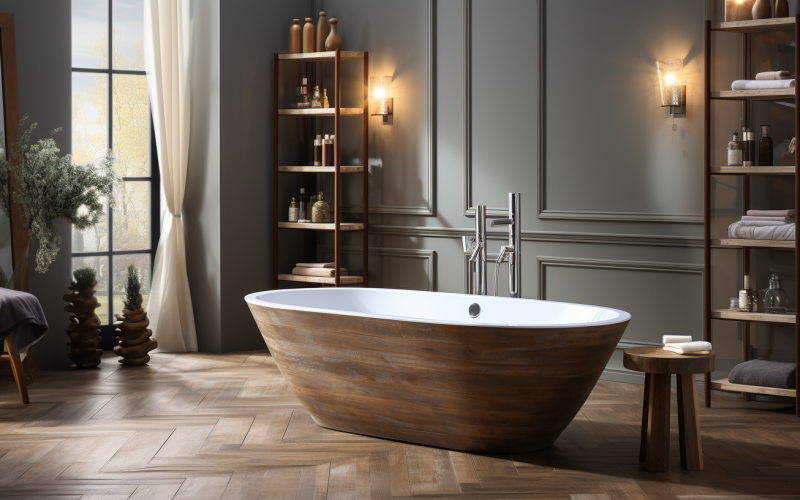Having good air quality at home is vital for your well-being. Poor air quality leads to health issues, including allergies and respiratory problems. Implementing effective strategies to improve indoor air can create a healthier living environment. Here are some top tips to enhance the air quality in your home, ensuring you and your family breathe easier and live healthier lives.
Understanding the Importance of Clean Air
Clean air is vital for maintaining overall health. Breathing in pollutants and allergens can cause or worsen respiratory conditions. The primary step in improving air quality is understanding the sources of indoor air pollution.
Additionally, air purifiers can help remove contaminants, providing cleaner and fresher air. These devices effectively eliminate allergens and microscopic particles that can affect health.
Common pollutants include dust, pet dander, mould spores, and chemicals from household products. Recognising these sources helps in taking targeted actions to reduce their presence and impact. Incorporating various methods can significantly enhance the air you breathe indoors. Simple actions, such as regularly cleaning and ventilating your home, can make a big difference.
Effective Ventilation for Better Air Quality

Proper ventilation is crucial for maintaining fresh air inside your home. Ensuring a good flow of outdoor air into your living spaces can dilute indoor pollutants. Keep windows and doors open to let fresh air circulate.
Using exhaust fans in bathrooms and kitchens helps remove moisture and odours, reducing the risk of mould occurrence and maintaining a cleaner atmosphere.
Using Houseplants to Purify Air
Houseplants are not only aesthetically pleasing but also help improve air quality. Certain plants, such as spiders, snakes, and peace lilies, are known for their air-purifying abilities. They can absorb toxins and release clean oxygen, making them a natural and beautiful way to enhance air quality. When selecting plants, consider their care requirements to ensure they thrive in your home environment. Place them strategically in different rooms to maximise their air-purifying benefits.
Choosing an Air Purifier from a Reliable Brand
Investing in an air purifier can enhance air quality in your home. When choosing an air purifier, consider the size of the space, the type of filter, and the specific pollutants you want to remove. HEPA filters effectively capture small particles, including dust, pollen, and pet dander.
Opt for an air purifier from a reliable brand known for its performance and durability. Research different models and read reviews to find the best option. An efficient air purifier can continuously clean the air, providing a healthier environment and reducing allergens and pollutants.
Implementing Smoke-Free Policies

Smoking indoors can severely degrade air quality. Implementing a smoke-free policy in your home is essential for maintaining clean air. Encourage smokers to do so outside and away from windows and doors. This prevents smoke from entering your home and ensures that indoor air remains fresh and free from harmful chemicals.
In addition to tobacco smoke, consider the impact of other sources of smoke, such as candles and fireplaces. Opt for smokeless alternatives, such as battery-operated candles, to maintain a cosy atmosphere without compromising air quality. Reducing smoke sources can greatly enhance the air you breathe indoors.
Choosing Low-VOC Products
Volatile organic compounds (VOCs) can off-gas from products such as paints, furniture, and cleaning supplies. These compounds can negatively affect air quality and health. To reduce indoor pollution, choose low-VOC or VOC-free products. Look for labels indicating low-VOC content when purchasing paints, finishes, and household items.
Ventilate your home well when using products that emit VOCs. Opening windows and using fans can dissipate these chemicals, reducing their impact on air quality. By selecting low-VOC products and ensuring proper ventilation, you can develop a clean environment for you and your family.
Using Purifying Products
Incorporating products like an air purifier into your home can be a game-changer for having clean air. These products are designed to filter out pollutants and allergens, providing a constant supply of fresh air. When buying an air purifier, look for ones with HEPA filters and high Clean Air Delivery Rate (CADR) ratings.
Air purifiers are mainly beneficial for people with allergies or respiratory conditions. Place them in commonly used areas, such as bedrooms and living rooms, to maximise their effectiveness. Regular maintenance, such as changing filters, ensures that your air purifier operates efficiently, contributing to a healthier indoor environment.
By following these strategies, you can significantly improve the air quality in your home, creating a healthier and more comfortable living space for you and your family. Prioritise clean air and proactively reduce indoor pollutants for better health and well-being.











